






Glaoui Kasbah

Kasbah of Telouet
El Haj T'hami el Mezouari el Glaoui
(1879–1956) is better known in English-speaking countries as T'hami El Glaoui or
Lord of the Atlas. Caïd (appointed head) of the Glaoua (Arabic) or Aglawou (Chleuh)
tribe of Southern Morocco, based at the Kasbah of Telouet in the High Atlas and
at Marrakech. His family name is El Mezouari, from a title given their ancestor
by Sultan Moulay Ismail in 1700, while El Glaoui refers to his belonging to the
Glaoui tribe, residing in the mountain pass of Telouet (many natives of Telouet
have El Glaoui as a surname but are not members of the El Mezouari family).
Pasha of Marrakech from 1912 to 1956. Ally of the French in Morocco, and
conspired with them in the overthrow of the king Sultan Mohammed V.
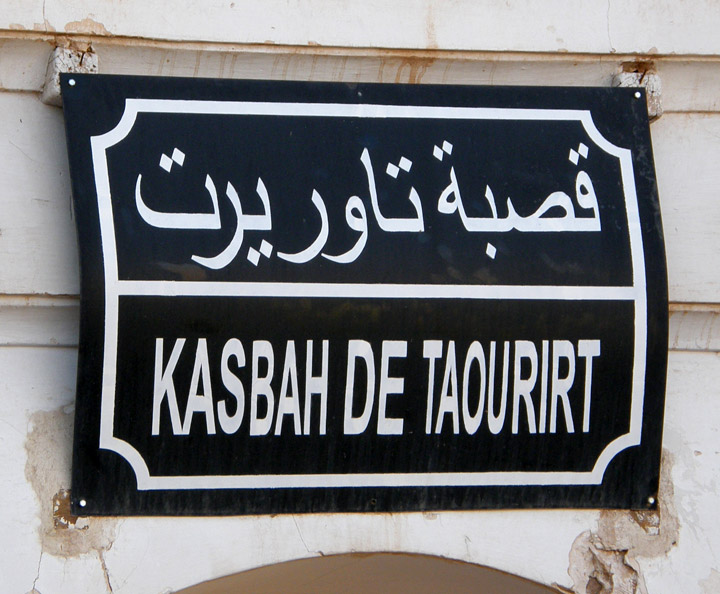
It should be remembered that until the second half of the 20th century, Moroccan
society was in a state of feudalism very close to that which pertained in Europe
during medieval times. At the top was the sultan, who held the two positions of
king (temporal ruler) and imām (spiritual leader). His court, or central
government (Makhzen), was headed by a Grand Vizier. The next tier of government
was provided by a large number of pashas (from the Persian padshah, literally:
viceroy) and caïds (the equivalent of European dukes, barons etc) whose
responsibilities were to collect taxes and keep order, to which ends they often
kept private armies. Under them were the mass of ordinary commoners whose
responsibilities were to pay taxes, obey their local master and provide him with
troops when necessary.
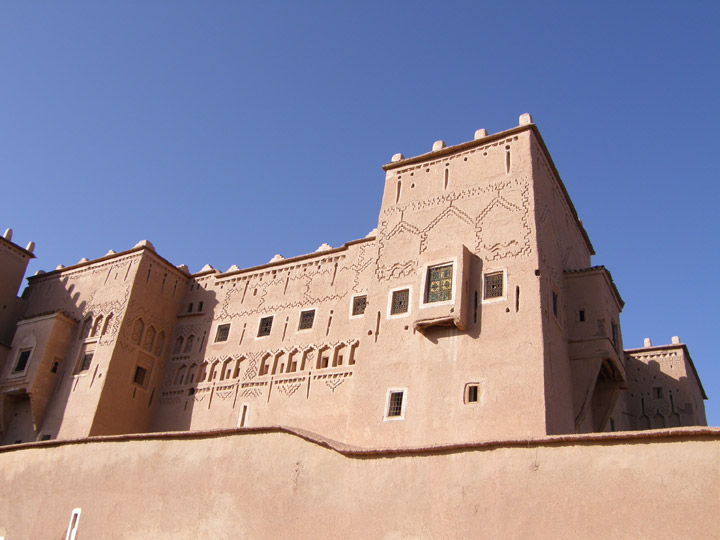
T'hami was born in 1879 to the caïd of Telouet, Si Mohammed ben Hammou and his
Ethiopian concubine Zora. When Si Mohammed died in 1888, his eldest son Si
Madani took over his father's position with the teenaged T'hami as his
assistant.

In the autumn of 1893, Sultan Moulay Hassan and his army were crossing the High
Atlas mountains after a tax-gathering expedition when they were caught in a
blizzard. They were rescued by Si Madani and T'hami, and the grateful Sultan
bestowed on Si Madani caïdats from Tafilalt to the Sous. In addition, he
presented the Glaoua arsenal with a working 77-mm Krupp cannon, the only such
weapon in Morocco outside the imperial army. The Glaoua army, used this weapon
to subdue rival warlords.
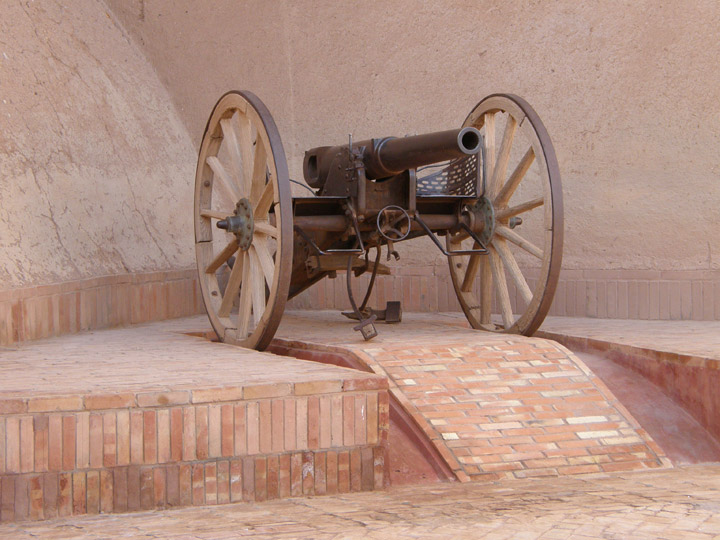
the cannon
In 1902, Madani, T'hami and the
Glaoua force joined the imperial army of Moulay Abdelaziz as it marched against
the pretender Bou Hamara. The Sultan's forces were routed by the pretender.
Madani became a scapegoat, and spent months of humiliation at court before being
allowed to return home. He thereupon began to actively work to depose Moulay
Abdelaziz. This was achieved in 1907 with the enthronement of Moulay Hafid, who
rewarded the Glaoua by appointing Si Madani as his Grand Vizier, and T'hami as
Pasha of Marrakech.

telling the story of the Kasbah and
the Cannon
The ruinous reigns of Moulay Abdelaziz
and Moulay Hafid bankrupted Morocco and led first to riots, then to armed
intervention by the French to protect their citizens and financial interests. As
the situation worsened, a scapegoat once again had to be found, and again it was
the Glaoua. Moulay Hafid accused Madani of keeping back tax money, and in 1911
stripped all Glaoua family members of their positions.
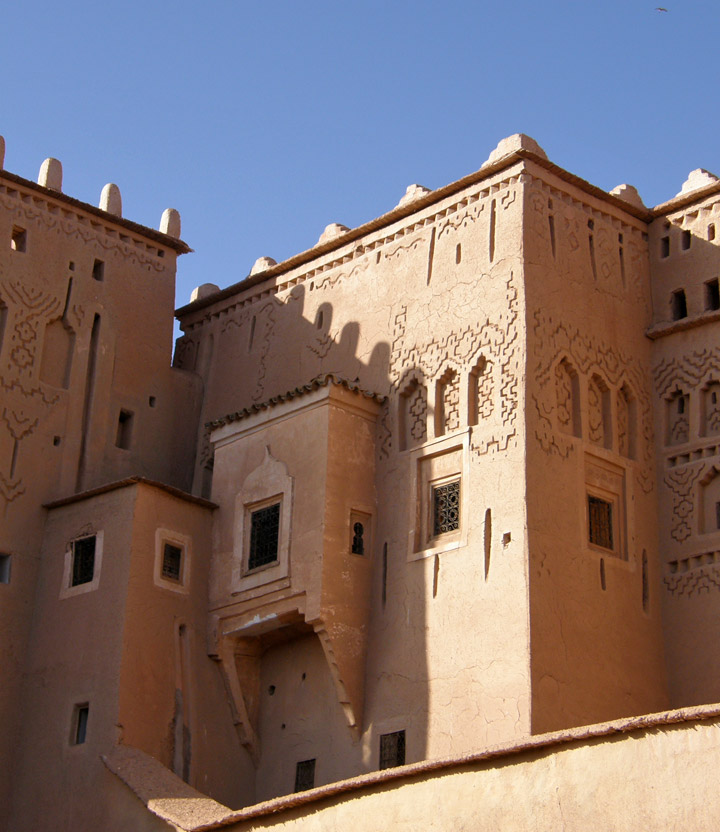
In 1912 the Sultan was forced to sign the Treaty of Fez, which gave the French
immense control over the Sultan, his pashas and caïds. Later that year, the
pretender El Hiba entered Marrakech with his army and demanded of the new Pasha,
Driss Mennou (who had replaced T'hami), that he hand over all foreign Christians
as hostages. These had sought refuge with the former Pasha, T'hami, who had
tried previously but failed to get them out of the district. T'hami handed over
the hostages, except for a sergeant whom he hid and supplied with a line of
communication with the approaching French army. The French scattered El Hiba's
warriors, and Driss Mennou ordered his men to overpower El Hiba's guards and
liberate the hostages. These then went to T'hami's place to collect their
belongings, and were found there by the French army in circumstances which
suggested T'hami alone had saved them. T'hami was restored to his position as
Pasha on the spot. Seeing that the French were now the only effective power,
T'hami aligned himself with them.
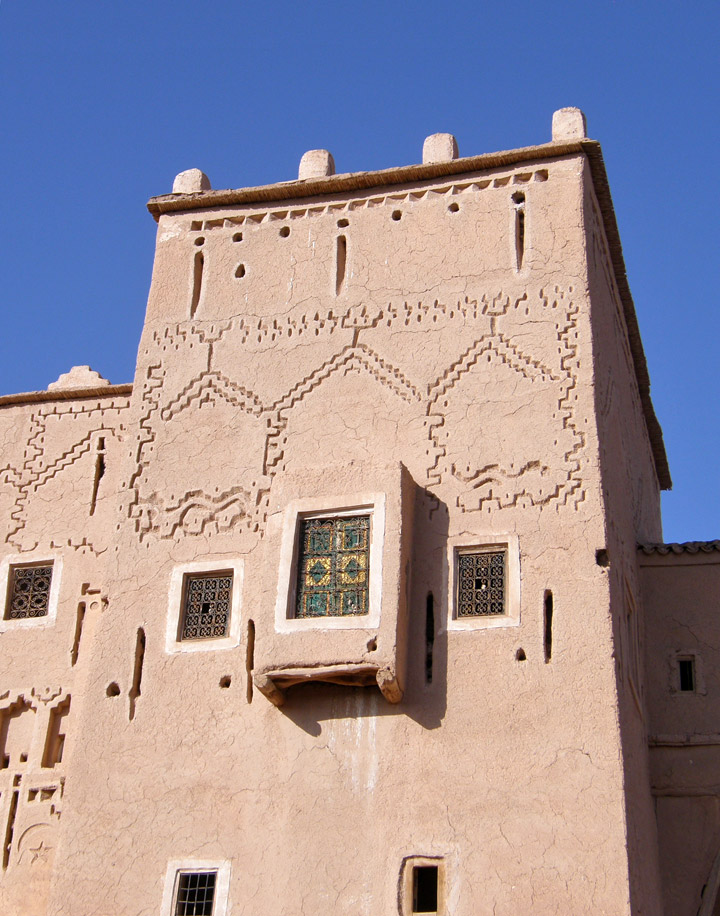
Madani died in 1918. The French immediately repaid T'hami's support by
appointing him the head of the family ahead of Madani's sons. Only Si Hammou,
Madani's son-in-law, managed to remain in his position as caïd of Telouet (and
therefore in charge of its arsenal). Not until Hammou died in 1934 did T'hami
get full control of his legacy.
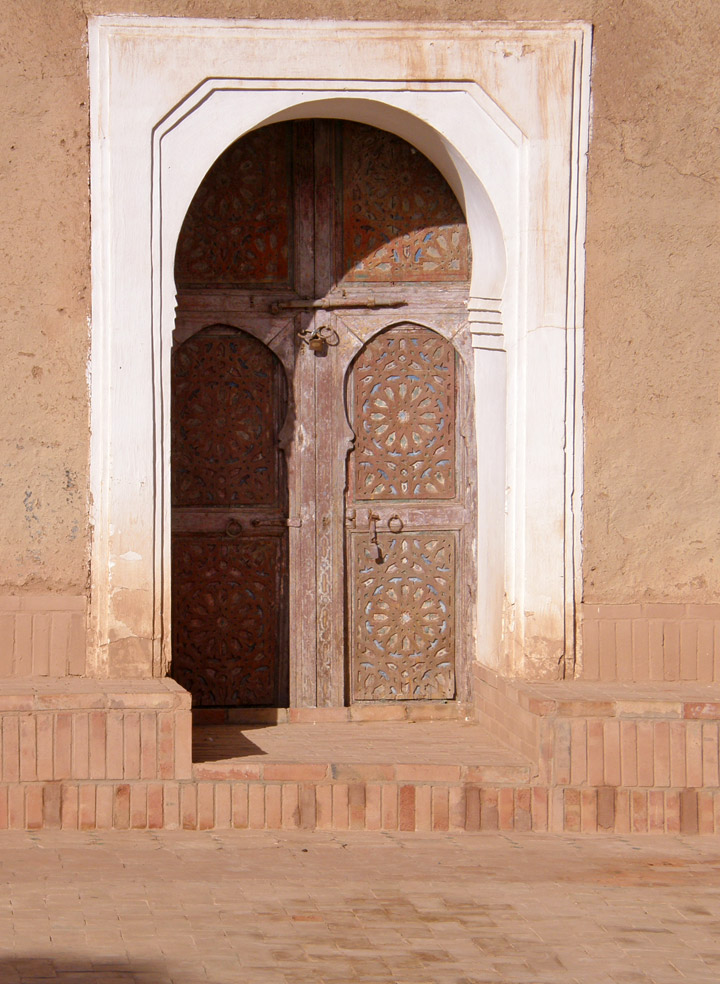
From that time on, T'hami's wealth and influence grew. His position as Pasha
enabled him to acquire great wealth by means which were often dubious, with
interests in agriculture and mineral resources. His personal style and charm, as
well as his prodigality with his wealth, made him many friends among the
international fashionable set of the day. He visited the European capitals
often, while his visitors at Marrakech included Winston Churchill, Colette,
Maurice Ravel, Charlie Chaplin.

The Pasha attended the coronation of Queen Elizabeth II as a private guest of
Churchill but his lavish gifts of a jeweled crown and an ornate dagger were
refused as it was not customary for gifts to be received from individuals not
representing a government.
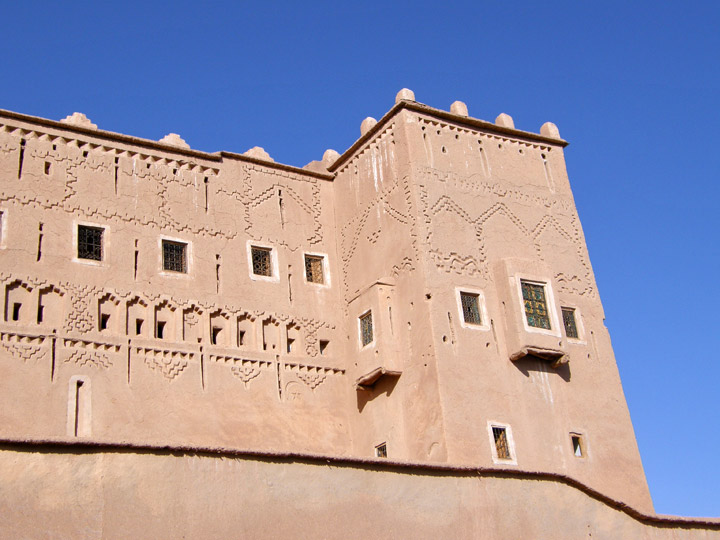
According to his son Abdessadeq, one of the principal means by which he acquired
great landholdings was that he was able to buy land at cheap prices during times
of drought. During one such drought, he constructed an irrigated private golf
course at Marrakech, at which Churchill often played. When the French protested
about the waste of water, they were easily silenced by granting playing rights
to the top officials.
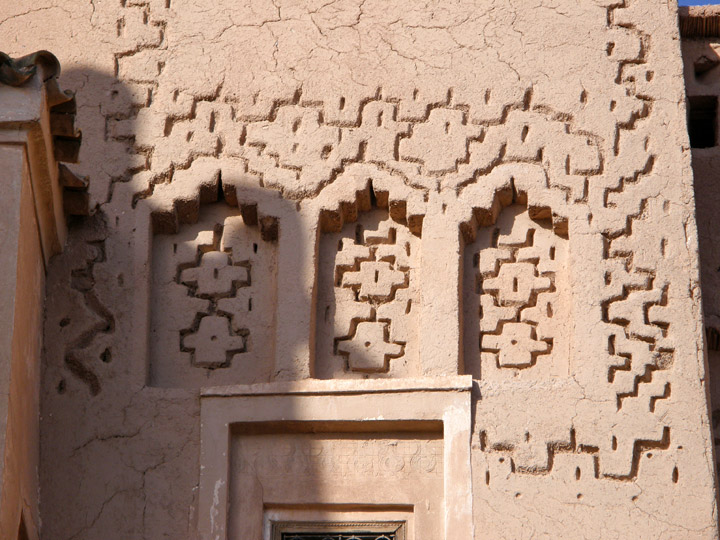
T'hami had two wives: Lalla Zineb, mother of his sons Hassan and Abdessadeq and
widow of his brother Si Madani; and Lalla Fadna, by whom he had a son Mehdi and
a daughter Khaddouj. Mehdi was killed fighting in the French forces at Cassino.
T'hami also had a number of concubines, of whom he had children by three: Lalla
Kamar (sons Brahim, Abdellah, Ahmed and Madani), Lalla Nadida (son Mohammed and
daughter Fattouma) and Lalla Zoubida (daughter Saadia). The first two of these
had originally entered T'hami's harem as musicians imported from Turkey.
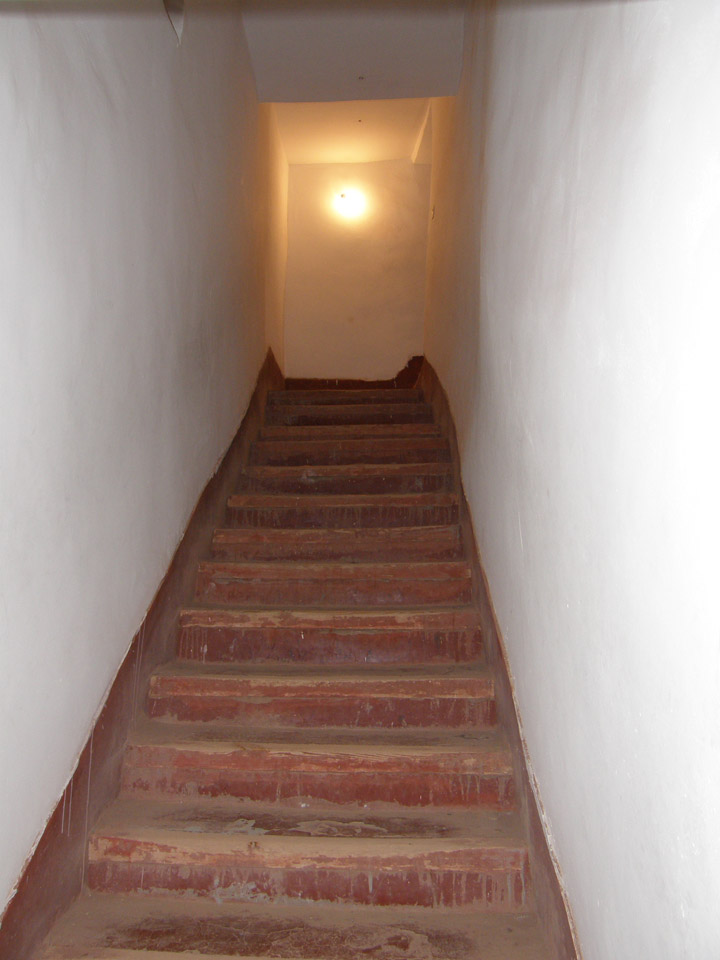
El Glaoui died of stomach cancer on 23rd January 1956, not long after the return
of the Sultan. His properties and wealth were later seized by the state. Most
Moroccans see him as a traitor and collaborator with the French.
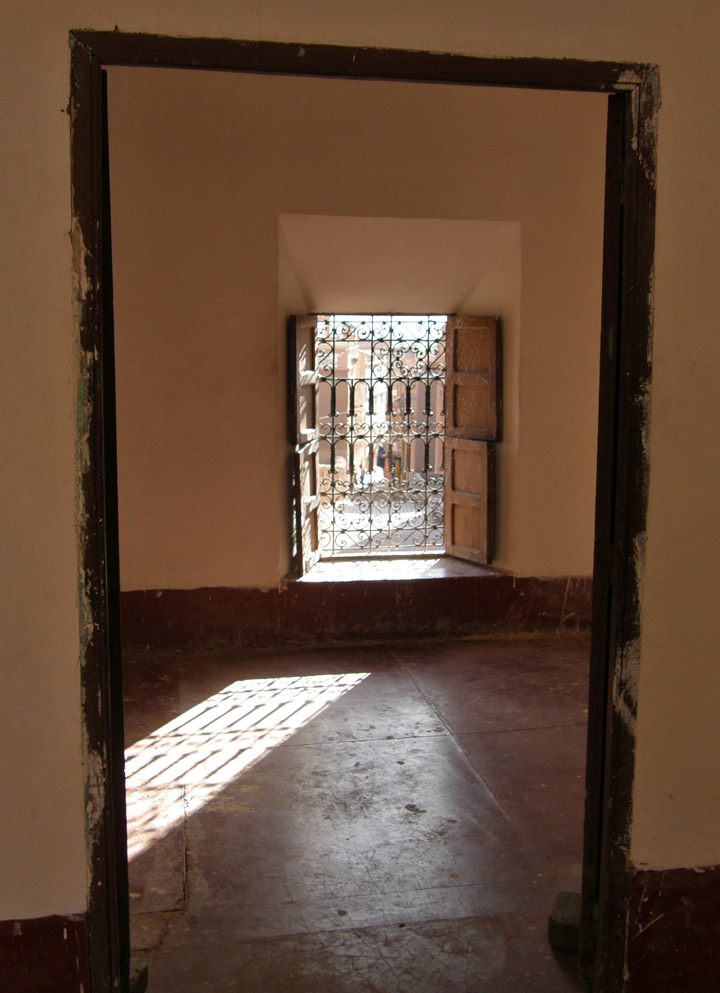
Abdessadeq El Glaoui, the son of Thami El Glaoui, and a past Moroccan ambassador
to the USA, has written a book about his father and his relations with the
French and the monarchy.

Hassan El Glaoui, another son of T'hami, is one of the best-known Moroccan
figurative painters, with works selling for hundreds of thousands of dirhams.
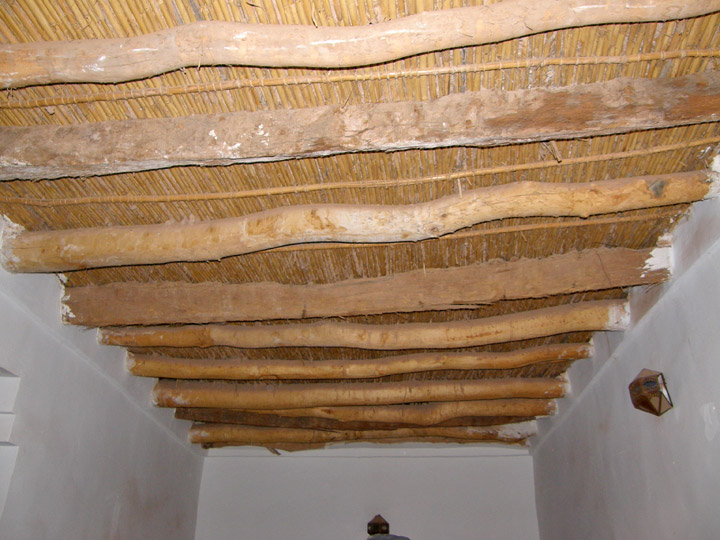
room roof constructiontion
Mehdi El Glaoui, the grandson of Thami
El Glaoui, is famous for his role as Sébastien in the television series Belle et
Sébastien
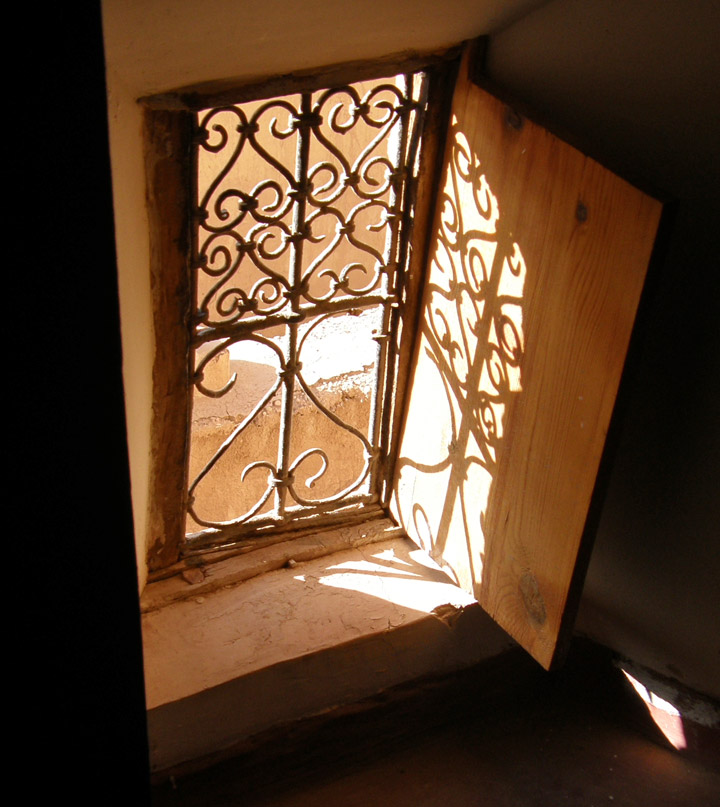
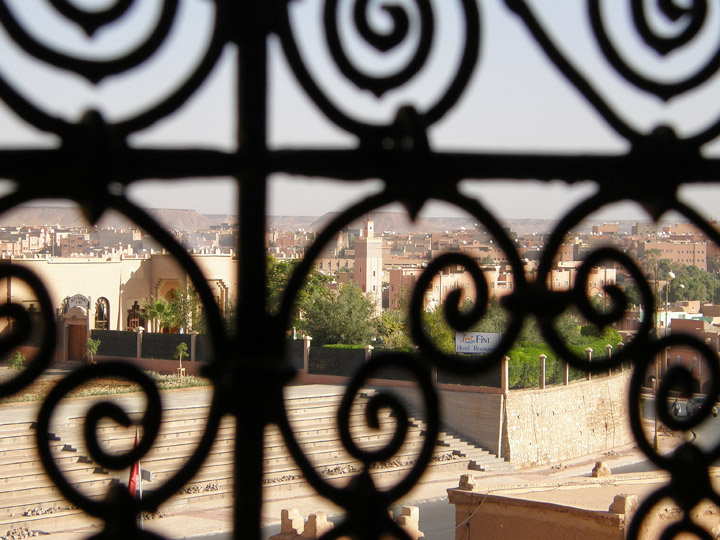
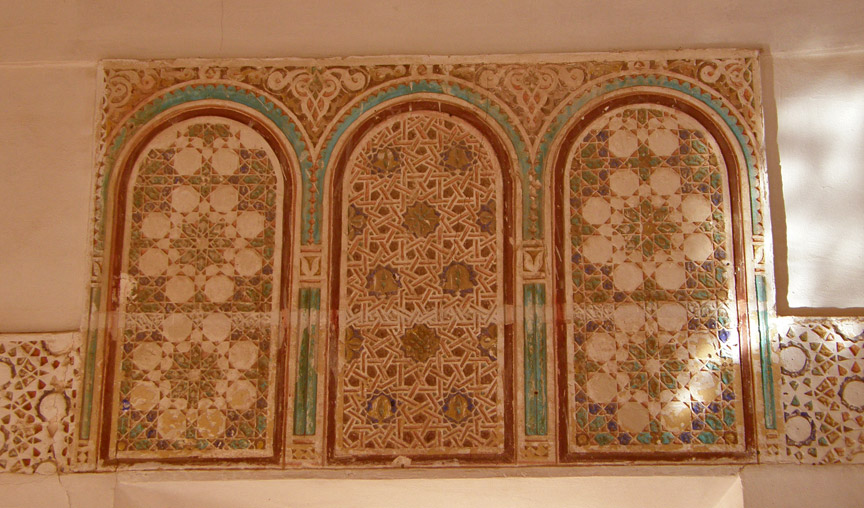
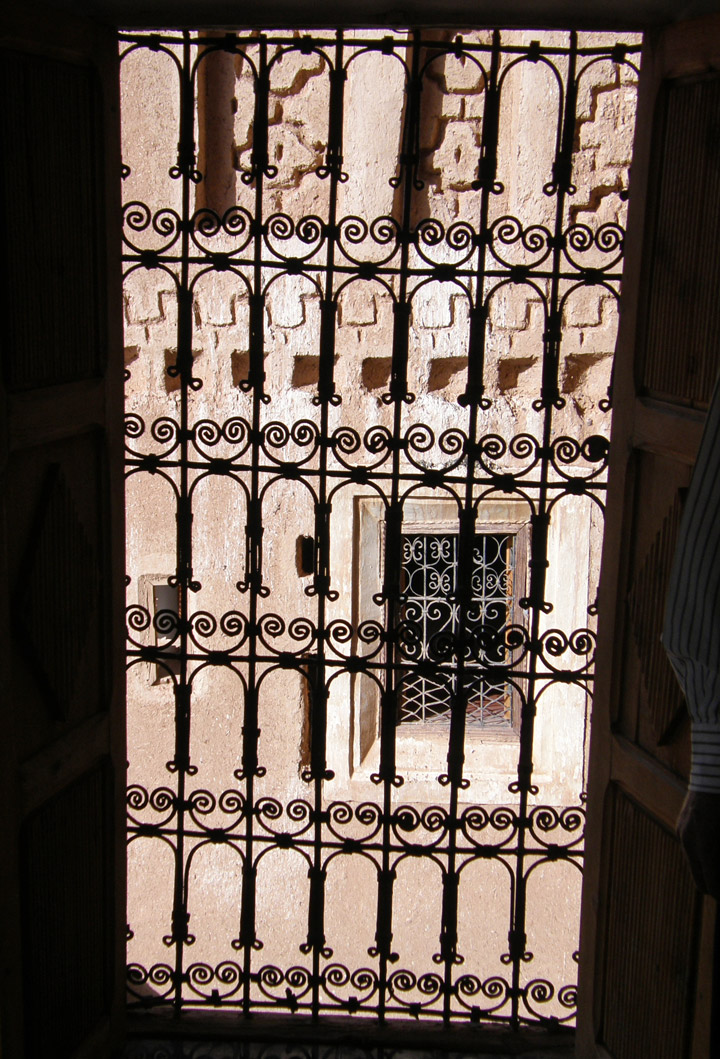
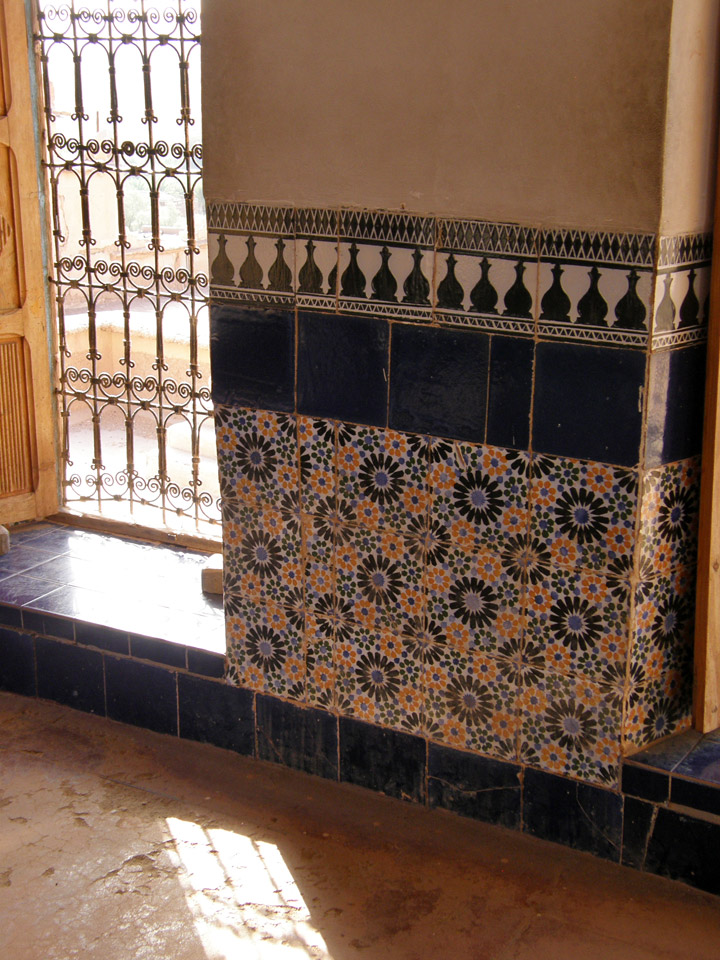
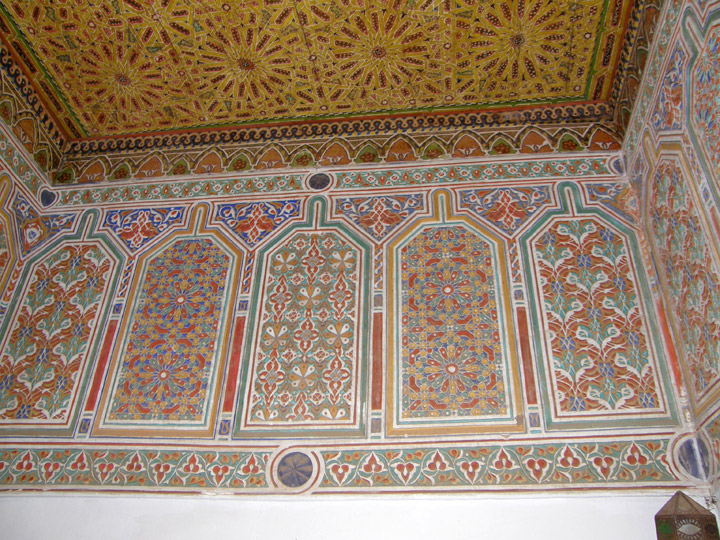


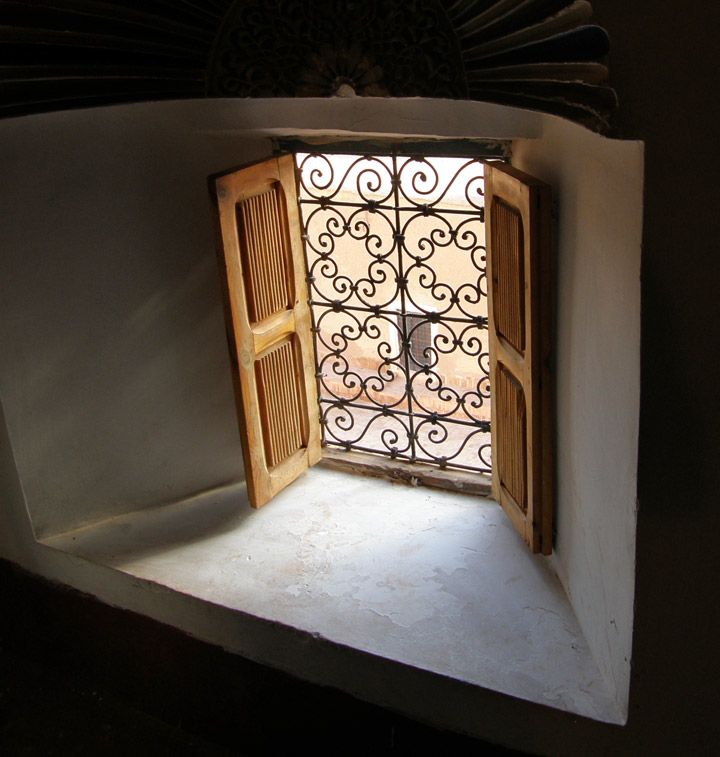

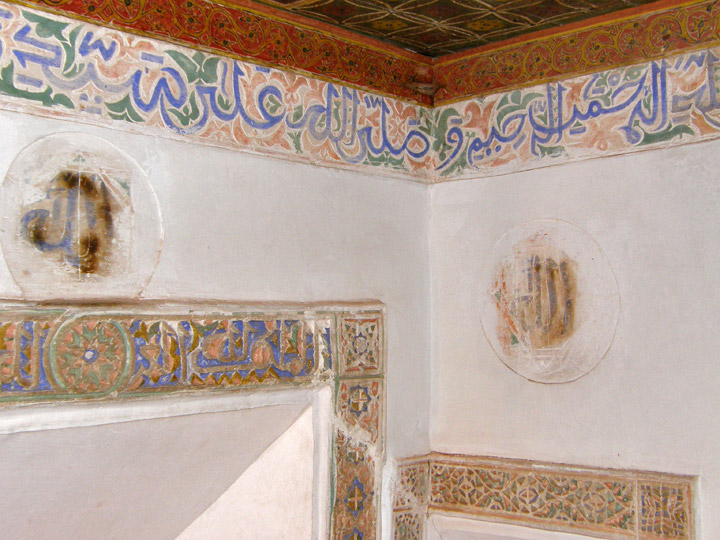
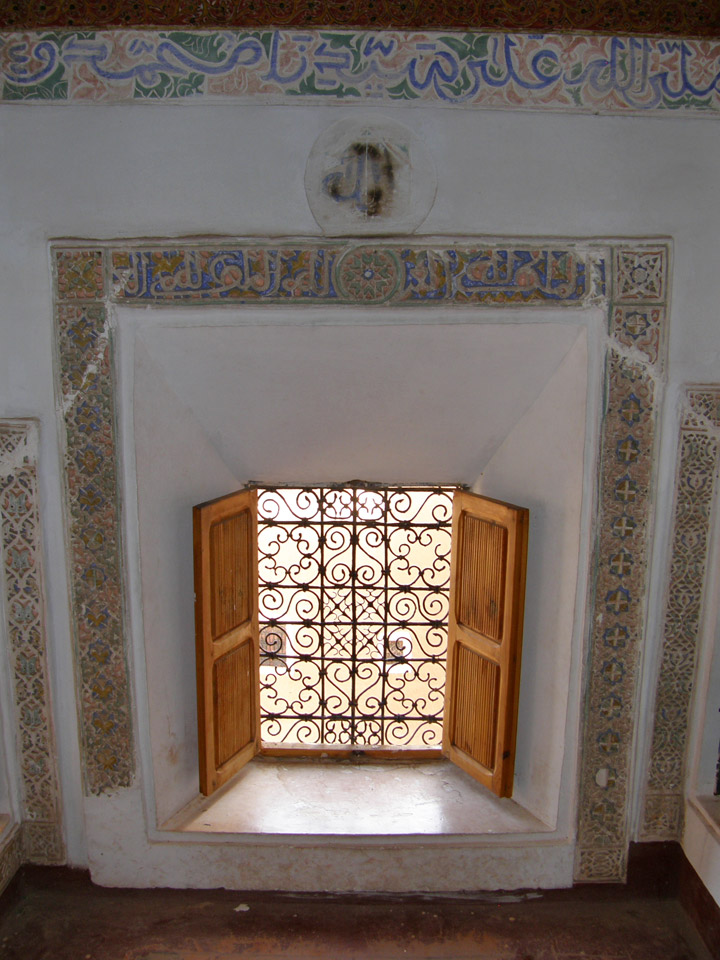



room roof decorationtion
More Photos of the Kasbah








































People and
Places
































